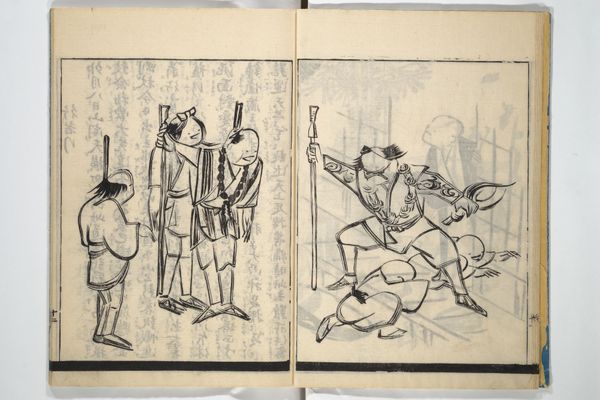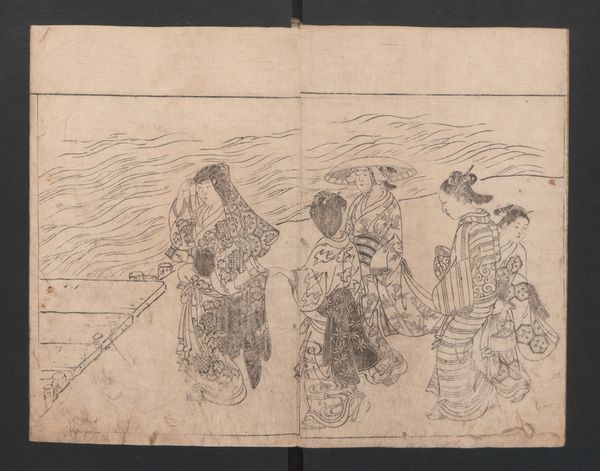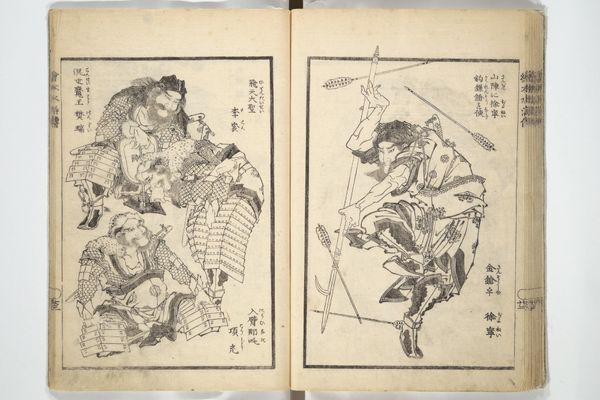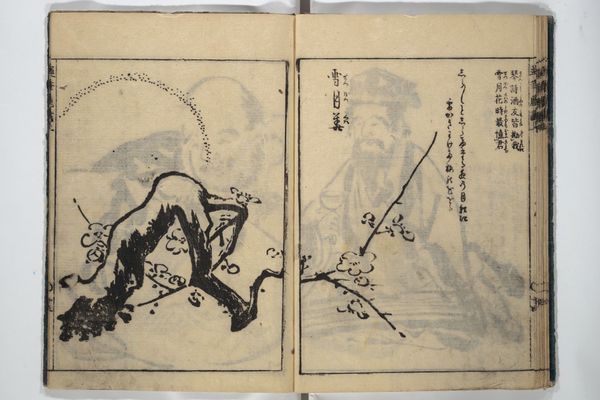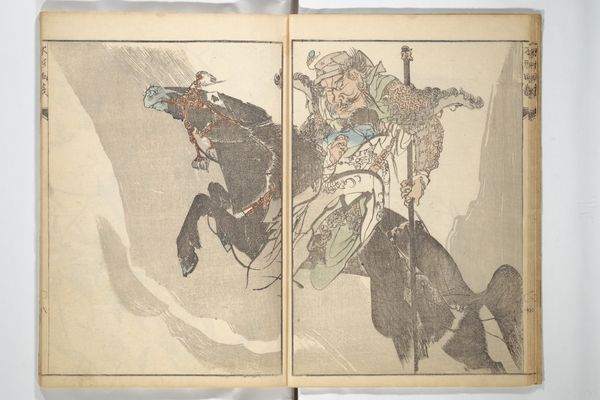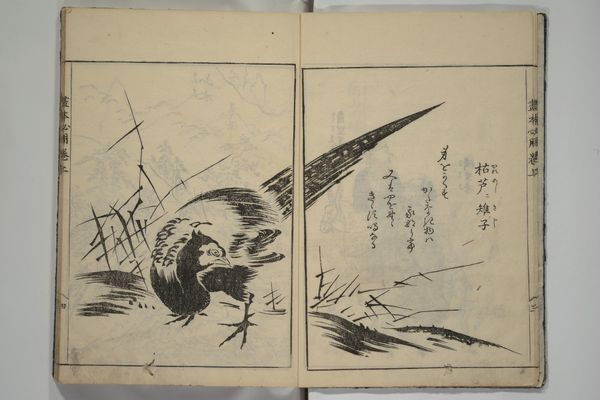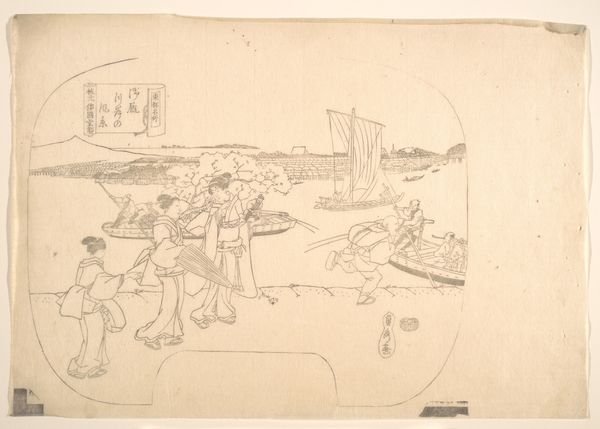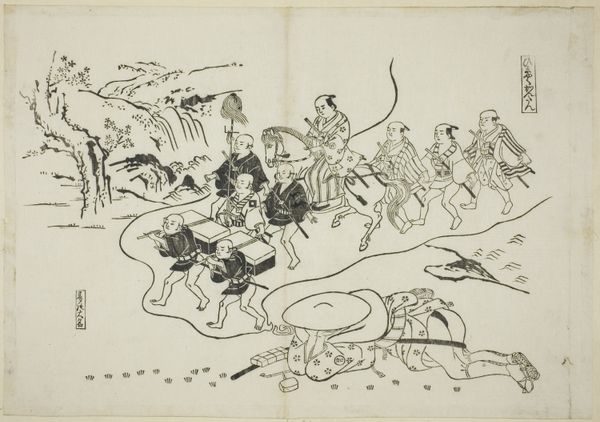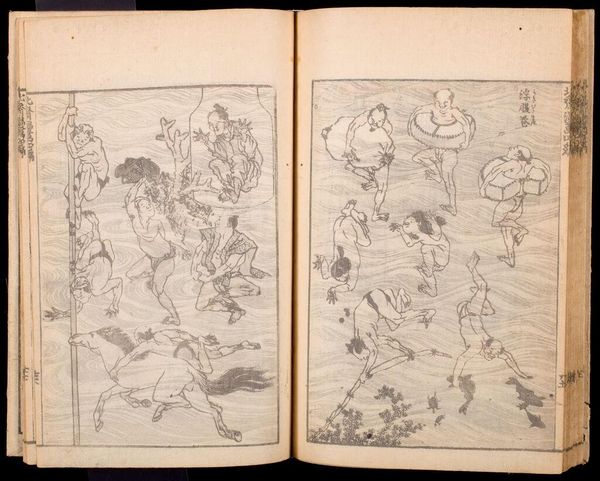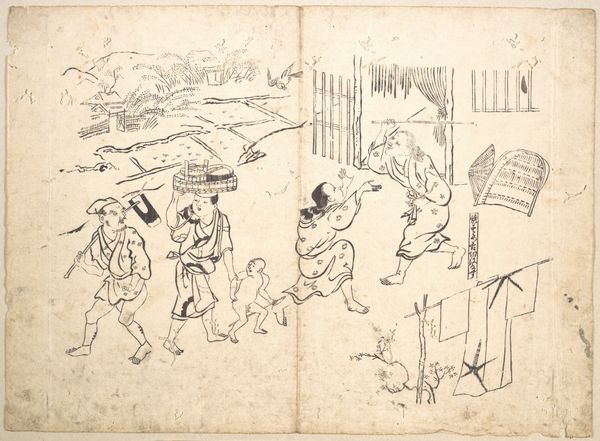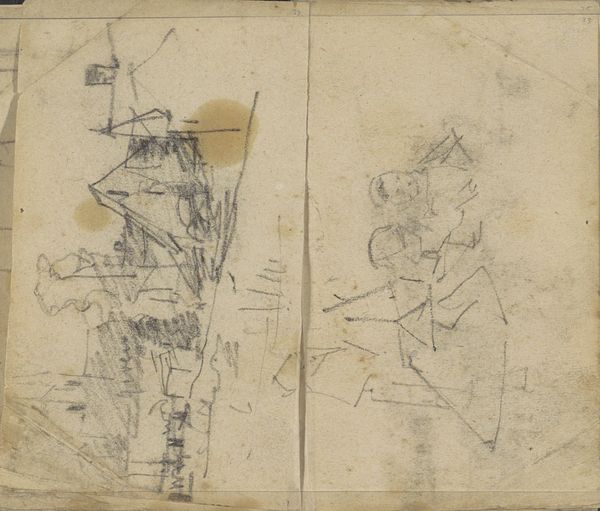
The Nantei Picture Album, Supplementary Volume 1823
0:00
0:00
drawing, paper, ink
#
drawing
#
medieval
#
narrative-art
#
book
#
asian-art
#
sketch book
#
ukiyo-e
#
figuration
#
paper
#
personal sketchbook
#
ink
#
sketchwork
#
ink drawing experimentation
#
men
#
genre-painting
Dimensions: vol. "plum" each: 10 1/16 × 7 5/16 in. (25.5 × 18.5 cm) vol. "kan": 10 5/16 × 7 3/16 in. (26.2 × 18.2 cm)
Copyright: Public Domain
Editor: This is the *Nantei Picture Album, Supplementary Volume*, created in 1823 by Nishimura Nantei, rendered in ink on paper. I'm struck by the immediacy of these sketches; it feels like a snapshot of everyday life. What story do you think this "snapshot" tells us? Curator: It’s tempting to read this as a neutral depiction, but genre paintings like this, especially from the Edo period, are anything but. How might the figures' poses or actions relate to social and economic realities of the time? Think about the rigid class structures and the portrayal of labor. Editor: I see your point. There's something about their labor being foregrounded... How would this relate to conversations around social mobility? Curator: Precisely! Images like these served both as records and, potentially, subtle commentaries on those societal constraints. The very act of depicting laborers could be read as a statement, wouldn't you say? Whose stories are typically missing from visual representation? Editor: Definitely, this piece forces us to ask what narratives are being told or ignored. So, it becomes less about just what they're doing, but *why* this scene was considered worthy of representation in the first place. I guess it reminds us of whose labor and lives often go unacknowledged. Curator: Indeed. This forces us to look at the socio-political environment through a nuanced intersectional lens. It moves us from a flat visual experience to understanding the potential resistance to social norms of the time. It is an incredible way of thinking about our role as both observers and narrators. Editor: That really reframes how I see this album. I went from thinking it was just a document of daily life to a form of social commentary and also consider it in relation to our world now, what issues remain and which ones we still have the responsibility to confront. Thanks.
Comments
No comments
Be the first to comment and join the conversation on the ultimate creative platform.
